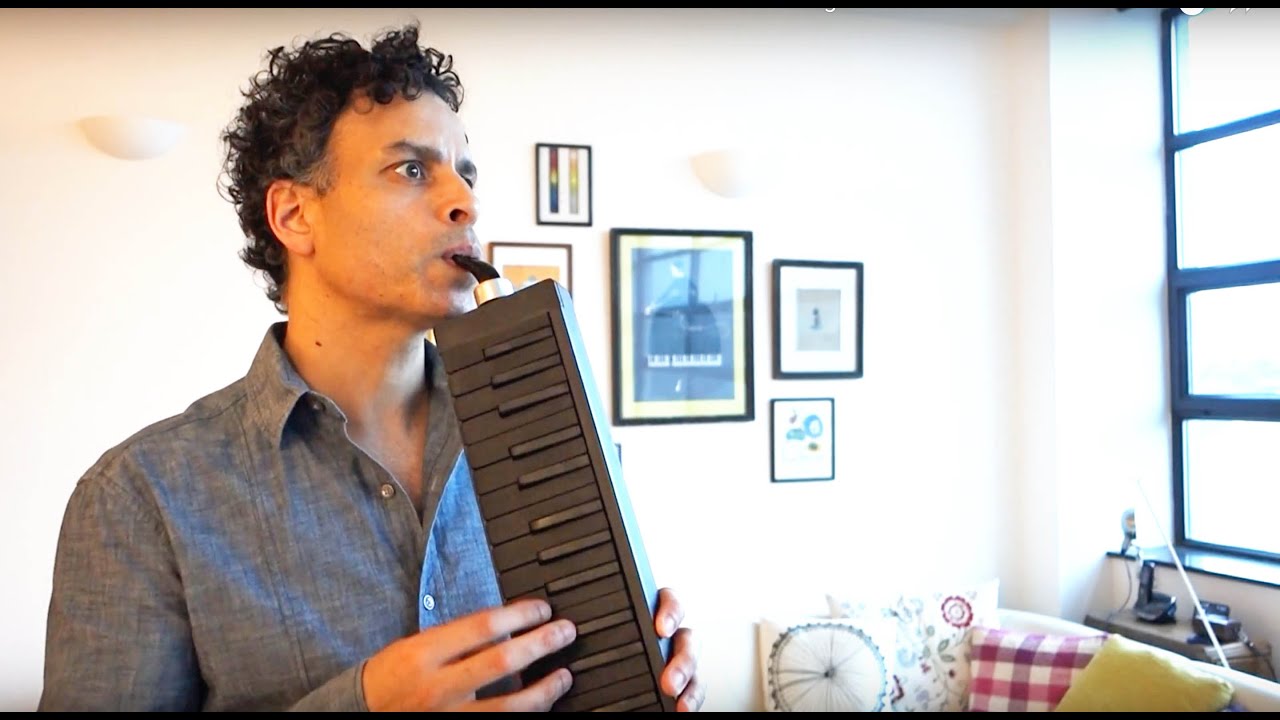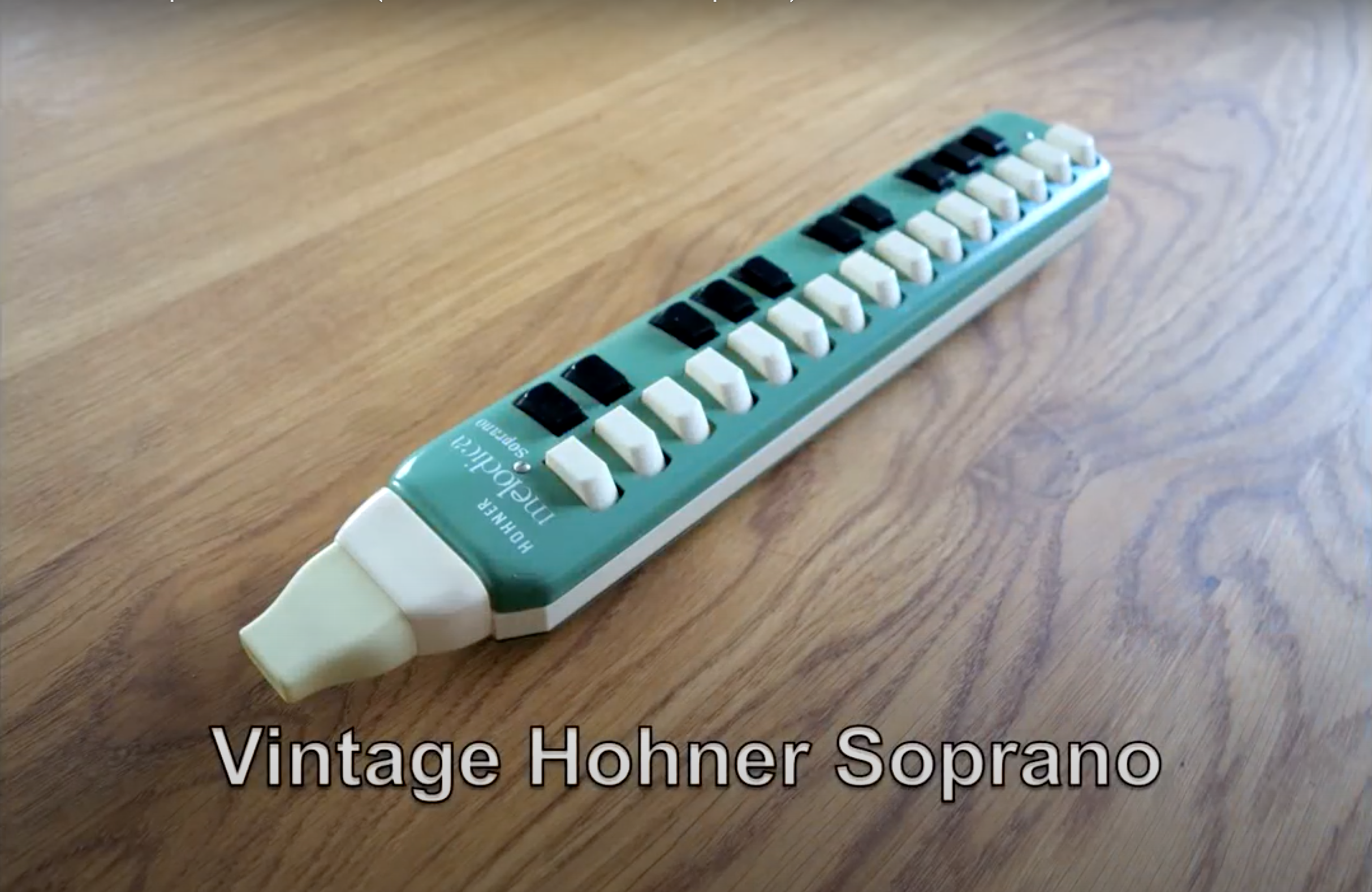The melodica isn’t always the first instrument that comes to mind when you think of the professional musician.
You can see why – if you just pick it up and mindlessly blow into it, it doesn’t sound very impressive. If you want it to sound good, you have to do the right practice. So check out these 10 tips, and you’ll be on your way to being a pro melodica player!
1) Copying Musicians that are better than you
This means putting away the sheet music and going directly to the recordings. Its about developing your ear, and listening carefully to what you’re hearing. When you can hear it, you work out how to replicate it in every detail.
You don’t have to go for a melodica recording for this, it can be an instrument or any singer whose sound you’re attracted to. Find someone that inspires you. Then start with just one phrase from that track, and learn to play it exactly as you hear it.
There’s a feature on youtube that allows you to slow down the playback, to half or a quarter, and that’s when you really start to hear some subtle and interesting things, that give them there unique sound. These things are normally so subtle that without careful listening, you wouldn’t notice them at all.
That’s exactly how I learnt to play in the traditional Irish style. I found one concertina player, whose style really spoke to me, and I copied him in every detail on the melodica. It doesn’t mean I play exactly like him now, but I have incorporated all the bits I like from his playing
2) Shaping a note
There’s many ways to shape a note with dynamics (volume), which you can influence by the amount of air you use. Let’s take a long note. If you play it on the melodica without any shaping, it sounds like a car horn. But what I’ve learnt, especially from singers, is the importance of the beginning and ending of a note.
Try playing a note like this: begin really quietly, gradually ramp up the volume, and then take it back down again as the note dies away. What you’re doing here is controlling the flow of breath, to influence the dynamics. It’s something that gets easier to do the more you practice, until eventually it just becomes natural.
3) Vibrato
This is something you hear a lot in singing, it’s that wobbly sound that adds colour and expression. There’s as many styles and intensities of vibrato as there are singers, but I find the best one that works for melodica is something called stomach vibrato. Its where you use short, sharp stomach contractions to create little bursts of air.
You can practice this without the instrument first.
With some air in the lungs, try drawing the stomach in and up, in one quick, sharp movement. Put one hand on your stomach so you can feel it. And put your other hand in front of your mouth to check that the movement is expelling air from the lungs. Then try doing a few of these in a row.
So this is the correct movement, but in an exaggerated form. Now try doing it with the melodica, with a key pressed down. This time its much more subtle. Just a tiny stomach movement that pushes air out into the instrument and making a sound.
And to do vibrato, you play a normal note, and you add these air bursts. Its just a subtle movement now, like a sort of inner stomach wobble, that you can’t see.
Once you’ve got that, you can combine shaping the sound (tip 1), with vibrato.
Start very quietly, and when the volume builds, gently add some vibrato, and then to end the note, reduce both the air flow and the vibrato together as the sound dies away.
Like all of these techniques, practice makes perfect. You practice in order to make it automatic, and after a while you’ll be doing it without thinking.
4) The Cut
This is where you play a very quick note just before the main note. It’s similar to the grace note in classical music, but its quicker, and a little bit more percussive. Its normally a tone or semitone above, but it can be any note you want.
Try different ones to see what works for you. You can use it at the beginning of a note, or once or twice during a long note. It should be very quick, just a tap of the key, and it should be completely separate from the main note.
5) The Tap
With a tap, instead of playing a quick note above the main note, you play a note below. You can use a combination of taps and cuts to decorate a note in any way. See what fits best for your style, and the music you’re playing It can give your sound some spice.
You’ll hear taps and cuts in a variety of genres, Celtic, jazz, many eastern styles, and also in pop music. Play around with them in different combinations to get a variety of sounds.
6) Triplets
This is a technique from traditional Irish music. It’s not a real triplet in the classical sense, more like two semiquavers and a quaver played in rapid succession.
We play these with a technique called tonguing. And its where you leave your finger down on a note, and re-trigger it by making sounds in the mouth. The sounds I use are teh and keh. Its as if you’re just starting to say a word, and you suddenly stop your self.
Try making these sounds, and see where they come from in the mouth. You’ll notice teh is made with the tongue at the front of the mouth, and keh is made further back. A triplet uses the sounds teh, keh, teh. So practice that, and see how fast you can get it. And then try it on the melodica with a key pressed down.
7) Tonguing Chords
Use the tonguing which you’ve just learnt for triplets, but apply it to chords. It’s the same principle as before. Repeat the alternating sounds teh, keh, teh, keh as many times as you want, and in any rhythm. You can get really creative here, and emphasise some of the chords to make rhythmic patterns.
8) Ghost notes
This can make a huge difference to your playing once you’ve mastered it.
When I was listening to an Indian flute at half speed recently, I realised that so many of the notes were barely audible. They just added to the ambience, and really helped create that delicate ethereal sound.
Ghost notes can sound great at the end of a phrase. Try adding a couple of really quiet notes to the tail end of a phrase. They’re much quieter than the main notes, and the only way to do this is by playing them as you taper off the breath.
You can practice just the last note of a phrase with two added tail notes at full volume, and then really back off the air flow for those tail notes. Use your ears to get the right volume. You should hardly hear the tail at all.
9) Minimal effort
This has been the single most beneficial technique in my melodica playing. It’s based on the concept of less is more.
Let’s say you want to play a note. What do you do? You chose a finger, chose a key, and press that key with your finger. This works fine for slow or basic playing. But as a soon as you need to play something more complex, or use some of the techniques I’ve been talking about, something else becomes really crucial.
And that’s, HOW you’re playing the note.
How efficient is that finger movement as it presses the key? How relaxed is your hand as you play it? We’re opening up a whole new dimension here. Becoming aware of this process, which we’re not normally aware of, is what I consider the secret to becoming a really good player.
I’ll show you a technique you can use for this.
Place your hand on the keyboard, so each finger is on a key. And finger by finger, go through this process: First become aware of the key underneath the finger tip. That means see if you can feel the sensation of that key. The sensation is there, but you might have no awareness of it at all. If that’s the case, move the finger slightly, until you can feel it.
Then use the minimal effort needed to drop the weight of the finger into the key, until you can feel it stop at the key bed. Now allow the spring of the key to gently take your finger back up. Its a tiny movement, just a few millimetres. Try it with every finger. This is pressing a key with minimal effort.
It can be quite a revelation when you first do this, and realise just how little effort it takes to press a key. The hardest thing about this is how unfamiliar it feels. It feels awkward, and you’re going to want to go back to your familiar way of playing. So you have to stick with it, with slow practice. Be willing to go to an unfamiliar place, again and again, until eventually, it feels natural.
Playing with minimal effort means that your hand and body can stay relaxed. And you need this relaxation to play complex music with ease. When you’re playing with less tension, you’ll also notice an improvement in the quality of the sound you’re making, it becomes more resonant and bell-like. This is how you get a good melodica tone.
10) Playing with both hands
Paying with both hands with the melodica in the upright position is something that is getting used more and more over the last few years. You can use a strap around your neck, to free both hands up, or do it sitting down with the melodica resting on your lap. I prefer the lap method, leaving my right hand is in the normal playing position, and extending the left arm, so the hand is over the black keys. I keep the instrument steady with the left hand thumb.
If you’re trying this out for the first time, its a great opportunity to put the minimal effort principle into practice right from the start. Thats exactly how I’m learning it!





